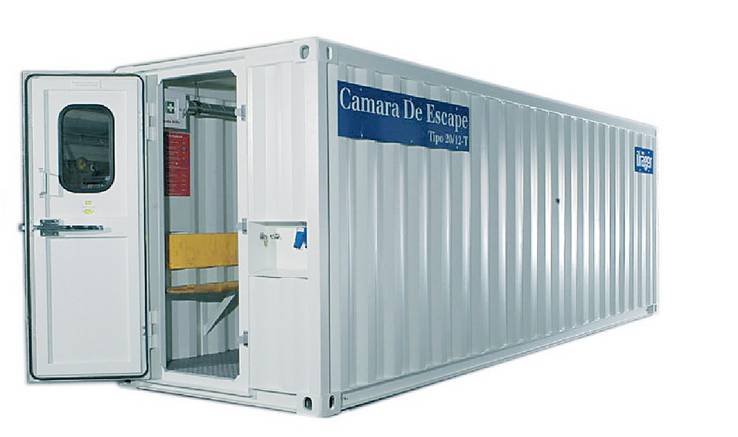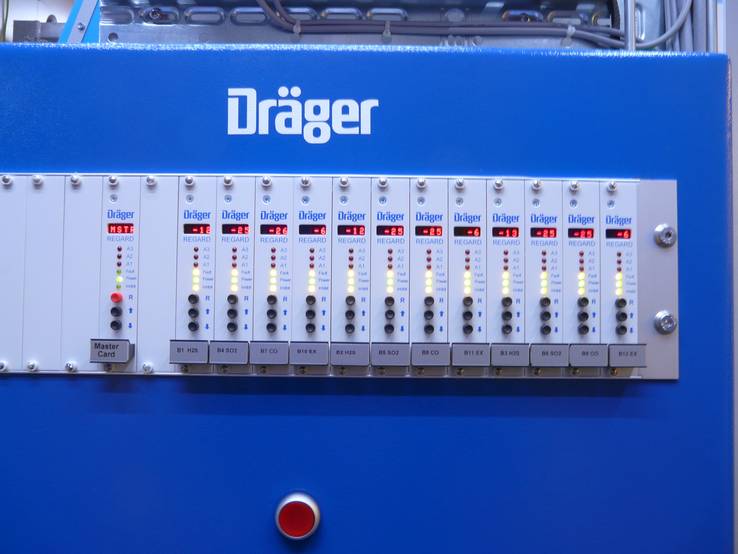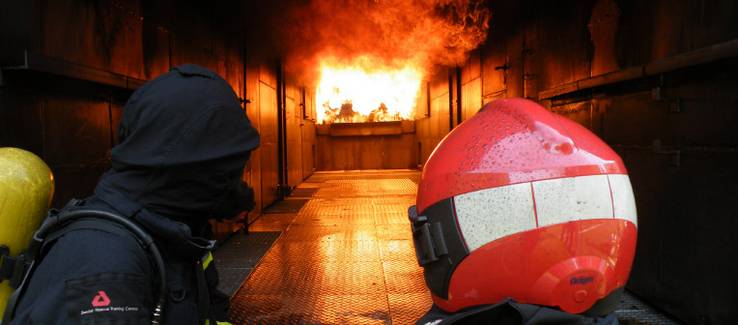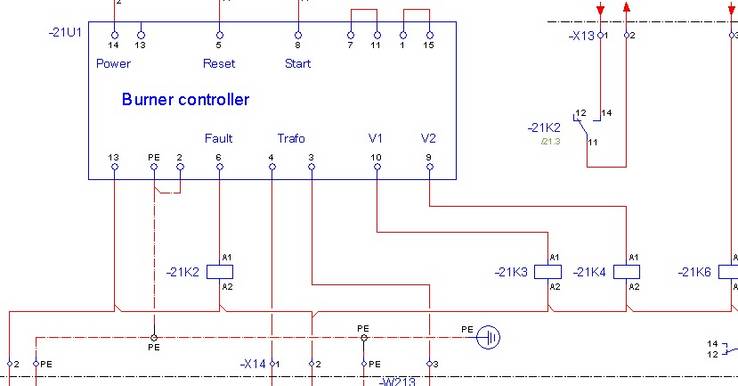When customised systems are standard
In Dräger's electrical planning, no project is like another, because the escape and rescue chambers and fire simulation systems are tailored exactly to the customers' requirements.
In Dräger's electrical planning in the field of Engineered Solutions, no project is like another, because the escape and rescue chambers and fire simulation systems which it plans and builds in Lübeck are tailored exactly to the customers' individual requirements and desires. Modern design tools such as the EPLAN Electric P8 ensure standardisation and automation in the electrical planning of these customised systems. Personnel can stay in an escape or rescue chamber from Dräger even under adverse and even life-threatening conditions. Because the container-like chamber provides everything you need to survive – above all breathable air.
Rescue of personnel – and simulation of fires
Depending on the model, the systems produce this air from the surrounding air or generate it in situ. Sensors continually monitor all relevant parameters. Slightly positive pressure ensures that no harmful substances penetrate into the chambers, which are equipped with air conditioning, a water supply and emergency equipment, among other things, depending on the customer's requirements. As a result, it is possible to stay in the chamber for anything from eight hours (escape chamber) up to 96 hours (rescue chamber). These systems are in demand worldwide, particularly in the mining and tunnel building industries. In Dräger's second area of business, the systems are even more individual: fire training and simulation systems allow for the controlled triggering of fires and thus create the conditions for targeted fire-fighting training, for example in aircraft fuselages, fire houses or industrial facilities. As a result, they allow a wide variety of scenarios to be generated – from local fire sources through to "flashover". For this, sophisticated control technology is required which appropriately controls not only the burner but also a broad range of gas and temperature sensors as well as optical sensors and camera technology which ultimately captures the success of the fire fighting.
Always "built to order"
For the electrical engineers of this Dräger business area it means that: each project is associated with intensive and individual development work. Olaf Böhm, team leader Electrical Engineering: "We differentiate between two types of projects: 'configured to order' and 'engineered to order'." This also applies for other products from Dräger Engineered Solutions, such as for complete fire and rescue vehicles which are supplied to railway companies and, alongside fire-fighting in tunnels, also allow for the evacuation of passengers in carriages specially designed for this purpose, for example.
Comprehensive electrical engineering know-how
As different as these products are – they ultimately all have the same goals: protecting lives, providing life support or saving lives. They thus fulfil the claim which Dräger expresses in its guiding principle of "technology for life". All of the systems use the basic gas-sensor and air treatment technologies (which also include CO2 absorption) which are characteristic of all of Dräger's business areas. And comprehensive electrical engineering know-how is "incorporated" into them all.
Comprehensive library for electrical planning
As a result, it is always ensured that the experience gained flows into each new project. Since the engineers have defined modules at a control technology level and created a comprehensive library which allows for individual project planning using the available designs. Carsten Urban, electrical engineer at Dräger: "In general, we use previous projects as templates." Key to determining which templates are used are not only the features of the system agreed with the customer but also the desired degree of automation which can differ widely depending on the customer and target country.
Design methodology: starting with a P+ID
The electrical engineers start their work with a P+ID which is created in EPLAN PPE (now: EPLAN Preplanning) and which also makes communication and coordination with the customer easier. Carsten Urban: "Before we were using this system there was only a textual description of the system and control functions. Now preplanning is much more transparent and clearly defined. We integrate the technological areas of electrical engineering, fluid technology and programming here, as well as mechanics to some extent."
In the future: all the way from preplanning to detail planning
The EPLAN P&ID which has already been introduced is now being improved even further: the engineers are planning the changeover to EPLAN Preplanning. This tool allows for the preplanning of complete automation systems across all technological areas. Olaf Böhm: "EPLAN Preplanning is consistent with EPLAN Electric P8. We will then be able to improve our work flow even more because we will be able to use consistent CAE systems all the way from preplanning through to detail planning."
Electrical design with high standards
In the electrical design itself there are high standards for safety and reliability – ultimately it's all about protecting, supporting and saving human lives. The escape and rescue chambers are generally equipped with multiple control boxes which are respectively responsible for tasks such as controlling the air treatment, sensors and air conditioning. Olaf Böhm: "We work on the basis of the relevant IEC standards and take a lot of country and company-specific regulations into account during planning." Even the microcontroller-based evaluation electronics for the gas-sensor technology is included in the scope of delivery from Dräger. In the EPLAN database, the seven electrical engineers from Dräger Engineered Solutions select the reference project which is most similar to the project to be developed and modify it according to the individual requirements. For this, it is a great advantage to be able to rely on a large "treasure trove" of available projects. Carsten Urban: "Our library of components is very extensive too. That's why the effort for customisation isn't too great."
Central PLM makes the design work easier
The designers' work is made easier by the fact that all design data is stored in a central Product Lifecycle Management (PLM) system. Olaf Böhm: "We file the projects with all the data and drawings from all technological areas – including the revisions – in the Agile PLM system and therefore always have the latest version to hand." Not only EPLAN Electric P8 but also the CAD tools used by the other technological areas such as Autocad and ProEngineer are connected to the PLM system via interfaces. As a result, the engineers have access to the entire pool of data across the technological areas and thus to a wealth of experience which has been used in the development of lifesaving customised systems.

Escape and rescue chambers from Dräger allow people to stay in hazardous areas – for example underground or during tunnel construction.
© Dräger

Olaf Böhm, team leader Electrical Engineering (left), and electrical engineer Carsten Urban (right) in front of a rescue container. Good to see: the Dräger measurement technology.
© Dräger

Even the microcontroller-based switchgears for the sensors are planned using EPLAN Electric P8.
© Dräger




